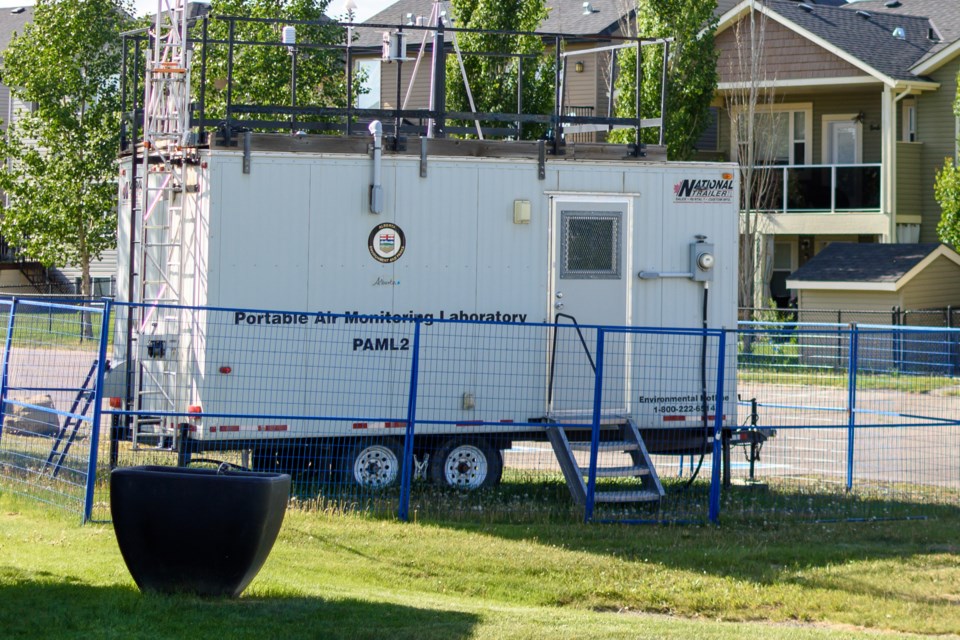HIGH RIVER - Dozens of residents who attended the High River council meeting this week heard that air quality measurements by a new monitoring unit don't exceed guidelines for health impacts.
Representatives from the Natural Resources Conservation Board (NRCB) gave an update about air quality measurements and addressed concerns about odours emanating from area feedlots, including at Rimrock Feeders west of the town, during the July 10 meeting.
Many residents in High River complain about a persistent stench, which is often so bad it forces people indoors with the windows shut.
Greg Piorkowski, science and technology manager with the NRCB, explained findings from air quality monitoring equipment located in northwest High River that was installed earlier this year. The Scentroid CTair unit measures for carbon disulfide, volatile organic compounds and ammonia, Piorkowski said.
“Those are the big three for livestock odours,” he said, adding that none of those measurements exceeded guidelines for health impacts.
“It's not to say that people haven't been perceiving odour. It's just what we've been measuring aren't indicating that there's health impacts from those measured parameters to date.”
The presentation looked at data collected from May 12 to June 27, and the results could change, he said.
“This is new technology for us, and it's not standard technology that's used in the province of Alberta,” he added.
Data validation procedures are still underway and may affect the results, he said.
The equipment measures wind speed and direction to help determine where odours could be coming from.
The NRCB compared wind direction to periods of odour complaints and found that during 70 per cent of complaint periods, the wind was coming from the west or southwest.
He said the NRCB will position additional air monitors at different locations, including a second CTair unit, which will be able to further determine odour sources.
“Because all we can really say today is wind direction, and potential sources of where those parameters are coming from," he said.
As far as odour mitigation at Rimrock Feeders, NRCB compliance manager Kevin Seward said one of the things they are looking at is manure management practices.
“We're looking at what that involves; how often do you scrape pens, what do you do with it, how often do you haul it out," Seward said.
They are also investigating catch basins as a source of odour, and he said a temporary windbreak has been constructed on the upwind side of the basins.
“We usually start by stacking bales,” he said. "It's easy to stack and move them around to find out where's the best location.”
If the bales are successful, he said a permanent wind fence could be installed.



